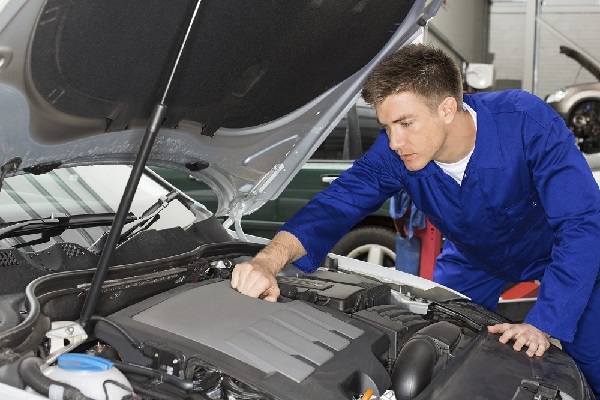Keeping your car or van running smoothly is essential for both your safety and the environment. Learn about some of the top tips for car and van servicing in this article so that you can keep your vehicle in tip-top condition!
What is Servicing?
Servicing is essentiial to keep your vehicle in a good shape for a longer period of time. Therefore, you should consider a service partner like jfautomotive.co.uk as they are one of the best in the industry.
Here are some top tips to keep your vehicle running smoothly:
1. Regularly check the oil and fluid levels. Make sure the engine oil is at the correct level and that all fluids are at the recommended levels. Check the fluid levels and replace them as needed.
2. Keep your tires properly inflated. Overinflated tires can cause premature wear, poor steering, and increased fuel consumption. Check tire pressure regularly and inflate to the manufacturer’s specifications.
3. Inspect your brakes regularly. Brakes should be inspected for proper wear, rust, leaks, and any other signs of trouble. If there is a problem with the brakes, have them repaired or replaced as soon as possible to avoid costly damage or accidents.
4. Keep an eye on your car’s battery condition. If you notice significant degradation in the battery’s health, have it replaced as soon as possible to prevent loss of power in critical situations (such as during a car crash).
Types of Servicing
If you’re like most drivers, your car or van is your trusty transportation companion. But just like any other machine, it can sometimes require some TLC to keep it running smoothly. Here are five tips for keeping your car or van running smoothly:
1. Regularly check fluid levels and replace any that have run low.
2. Check the air conditioner and heater settings, and make sure they’re set to the appropriate temperature.
3. Check the brakes and make sure they’re working properly.
4. Change the oil and filter regularly, and if the vehicle has an automatic transmission, check the fluid level and filter every 3,000 miles or every three months, whichever comes first.
5. Check all lights and warning indicators to make sure they’re working properly
What to Expect at a Service
If you’re like most people, your car is a household essential. But just because your car is important to you doesn’t mean it’s not important to the mechanics who keep it running. Here are some tips for keeping your car running smoothly:
Inspect your tires regularly. A worn tire can cause decreased fuel economy and increase the risk of getting a flat.
Examine all fluid levels and replace as necessary. Different fluids work in different ways to keep your engine running smoothly and protect it from rust and corrosion.
Keep an eye on the brakes. If they’re going soft or squeaking, have them inspected and serviced as soon as possible. A good brake system protects both you and other drivers on the road.
Get regular tune-ups if you drive often in areas with tough roads or severe weather conditions. Keeping your car tuned up will save you money on future repairs.
Car Servicing
There are a few things you can do to keep your car running smoothly and avoid common problems. Regular servicing can help prevent costly repairs in the future, and following these car servicing tips can keep your vehicle running like new:
1) Have your air filter replaced on a regular basis. A dirty air filter will cause reduced fuel economy, increased emissions, and decreased engine performance. Have it replaced every 3–4 months.
2) Check your oil level regularly. An overfilled or underfilled oil level can cause excessive wear on your engine and other mechanical components. Check it every 3–4 months and add or remove oil as needed.
3) Keep your tires inflated to the manufacturer’s specifications: underinflated tires can lead to suspension damage, decreased traction, and increased wear on other parts of the vehicle. Inflate them to the manufacturer’s standard PSI levels every 6 months or when they reach 60% of their original pressure rating.
4) Get checked for recalls: Always check for recalls before taking your vehicle in for service. This will help you avoid potential problems down the road.
Van Servicing
If you’re like most drivers, your car and van are your go-to transportation options. That’s why it’s important to keep them running smoothly so you can get where you need to go. Here are some top car and van servicing tips to help keep your vehicle running smoothly:
1. Check the oil and filter regularly. A dirty engine will wear out faster and may require more frequent repairs, so make sure to check the oil and filter regularly.
2. Change the brake pads and rotors when they need it. Brake pads and rotors should be replaced every 3 to 5 million miles, depending on the type of driving you do.
3. Replace air filters on a regular basis. Air filters play an important role in keeping your car or van running cleanly by removing dirt, dust, and other contaminants from the air intake system. Replace them every 6 months or 2 million miles, whichever comes first.
4. Check all fluid levels regularly and replace as needed. Make sure all fluid levels are correct, including engine coolant, windshield washer fluid, brake fluid, transmission fluid, etcetera. Fluid levels that are too low can cause your car or van to stop working properly, so be sure to check them often!
Tune Up and Maintenance Schedules for Your Vehicle
Since your car or van is a major investment, it’s important to keep it running smoothly in order to get the most out of it. Here are some tune-up and maintenance schedules for common car and van models:
Car Models:
-Annual tune-up: This should be done at the manufacturer’s recommended interval, which can vary depending on the make and model of your car. It may include oil changes, new air filters, and inspections of all fluids and systems.
Maintaining scheduled services: Always have your tires rotated, brakes serviced, spark plugs replaced, and belts replaced as needed. Check all fluid levels and replace any that are low or empty. Brake pads should also be replaced every 6 months or when they begin to show signs of wear.
-Inspection schedule: Have your car inspected by a qualified mechanic once a year. This will help ensure that everything is functioning properly and that there are no unexpected issues.
Van Models:
-Annual tune-up: As with cars, vans will generally require an annual tune-up consisting of oil changes, new air filters, inspections of fluids and systems (including brakes), etc. Additionally, check brake pads every 6 months to ensure they remain in good condition. Tires should also be rotated every 3 years or when they show signs of wear.
Replacement Parts for Your Vehicle
Looking for car and van parts to keep your vehicle running smoothly? Here are some tips:
When it comes to car and van parts, it’s important to have a reliable source. Check with your local auto parts store or dealership, as they will likely carry the parts you need. When shopping for car and van parts, make sure to read the descriptions carefully so you know what you’re getting. For example, if you’re looking for an air filter, be sure to specify the type (e.g., paper or metal) and size.
It’s also important to replace car and van parts regularly. Doing this will help keep your vehicle running smoothly and prevent problems down the road. Make a schedule for replacing certain parts and stick to it, even if it means taking a little bit longer to get your vehicle up and running again.
If you have any questions about which car or van part is right for your vehicle, don’t hesitate to ask your mechanic or your local Auto Parts Warehouse representative. They’ll be more than happy to help guide you in the right direction!
Tire Services
If you’re like most drivers, you probably take your car or van for granted. However, without regular maintenance and services, your vehicle will quickly become less reliable and will perform at peak performance less frequently. Regular tire rotation is especially important to keep your vehicle running smoothly on the road.
Here are some top car and van servicing tips to keep your vehicle running smoothly:
1. Have all of your tires rotated regularly by a reputable mechanic. Rotating all four tires at once will help ensure even wear and maximize the life of your tires.
2. Check the air pressure in each tire regularly and adjust as needed. Over-inflated tires can lead to decreased fuel efficiency, increased wear on other components, and even rolling noise when you drive. Under-inflated tires also increase the risk of blowouts.
3. Check for signs of dry rot or cracking in your car’s frame or wheel well areas; if any are detected, have them repaired as soon as possible to prevent serious damage that could result in a Vehicle Code Violation (VCV).
4. Inspect brake pads, struts, hoses, and shocks regularly for signs of wear or tear; if any are noticeable, have them replaced as soon as possible to avoid issues with braking or handling while driving.
Brake Services
There are a few things you can do to help keep your car and van running smoothly. Here are some brake service tips to keep your vehicle in good condition:
1. Inspect your brakes every month. Brakes should be inspected for wear, rust, and leaks. If there is any sign of wear or damage, have them replaced as soon as possible.
2. Change your brake pads at least every 12,000 miles. Brake pads perform best when they are new and have been heated up from the rotor surface.your.
3. Check your fluid level and replace it if it’s low or has expired. Fluids lubricate the moving parts of your braking system and help them operate effectively. If the fluid is low, it may cause noise or a lack of stopping power in your brakes.
Electrical Services
If you’re like most drivers, your car and van probably get a lot of use. That’s why it’s important to keep them running smoothly so they can do their job. Here are some tips to keep your car or van running like new:
1. Change the oil and filter regularly. A well-maintained engine will run more efficiently, which will save you money in the long run. Change the oil and filter every 3,000 miles or when they show signs of wear.
2. Check fluids and brakes: Make sure all fluids are at the correct levels, and check brake pads and rotors for wear or corrosion.
3. Replace worn parts. If something is starting to go wrong with your car or van, replace it as soon as possible to avoid major repairs down the road. This includes tires, belts, cooling systems, batteries, etc.
4. Regularly tune up your vehicle. If you don’t tune up your car every 6 months or 1 year (depending on how often you drive), it will start to lose power and performance over time. This will lead to increased fuel bills, decreased gas mileage, and potential mechanical problems down the road.
Warranty and Service Plans for Your Vehicle
If you’re anything like most drivers, you probably take your car or van for granted. But don’t forget that your vehicle is a machine that needs regular care and maintenance to keep it running smoothly. Here are some tips on how to keep your car or van running smoothly:
1. Have your oil and filter changed regularly. This is one of the most important things you can do to keep your car running well. Not only will it give your engine the best possible chance of lasting a long time, but it’ll also protect it from harmful contaminants. Change your filter every 3,000 miles, and change your oil every 5,000 miles (or sooner if the level starts to drop).
2. Keep an eye on the fluid levels. Make sure all of the fluids in your car are at or near their proper level by checking the fluid levels periodically using a dipstick or a gauge. This will help avoid any costly repairs down the road.
3. Replace worn parts as needed: If you notice any parts on your car starting to wear down significantly (such as tires), replace them as soon as possible to avoid any major problems down the road.
4. Check for recalls: Make sure to check for recalls on your vehicle periodically so that you can get the necessary repairs done without delay. You may also need to have certain components replaced due to recall issues.


